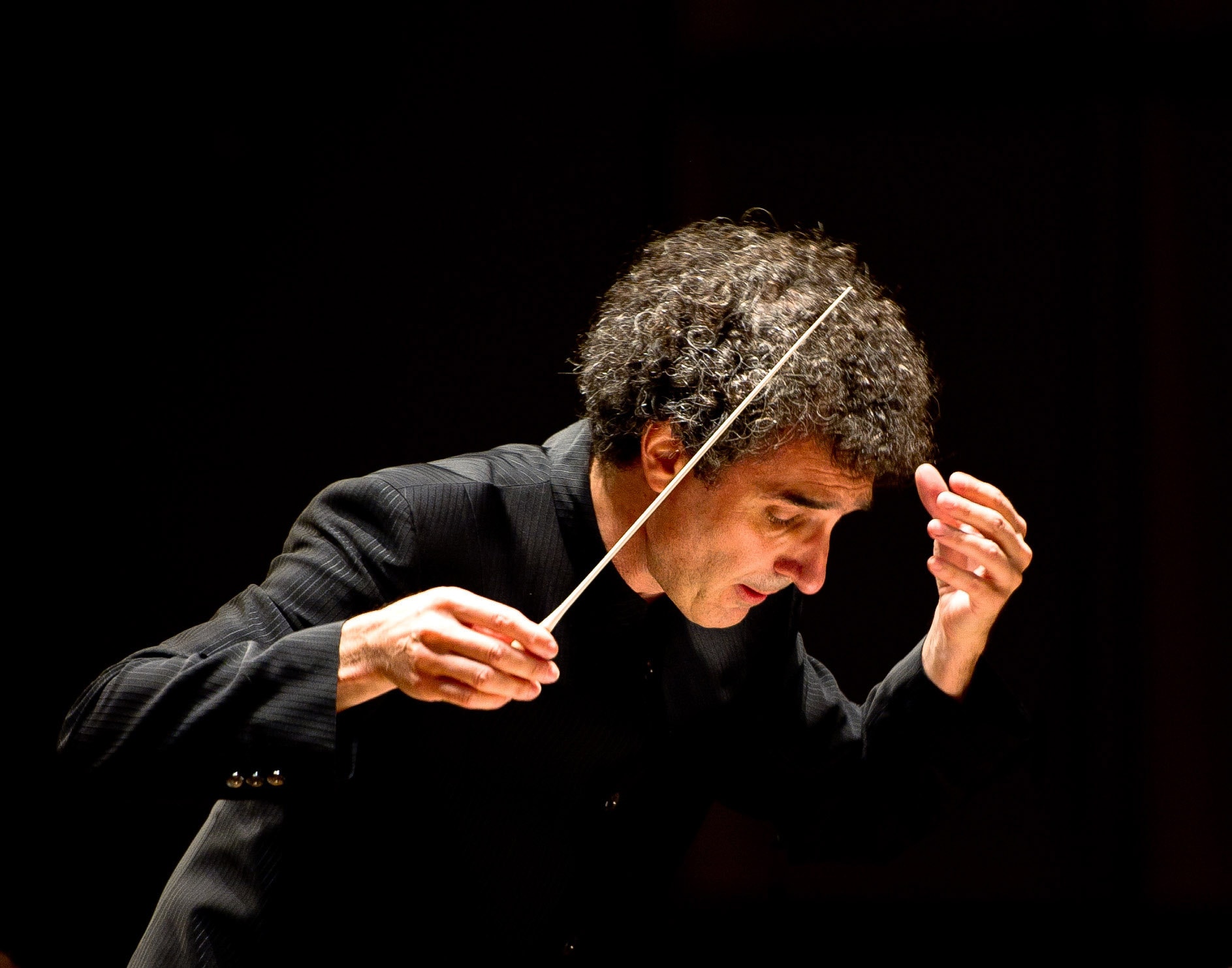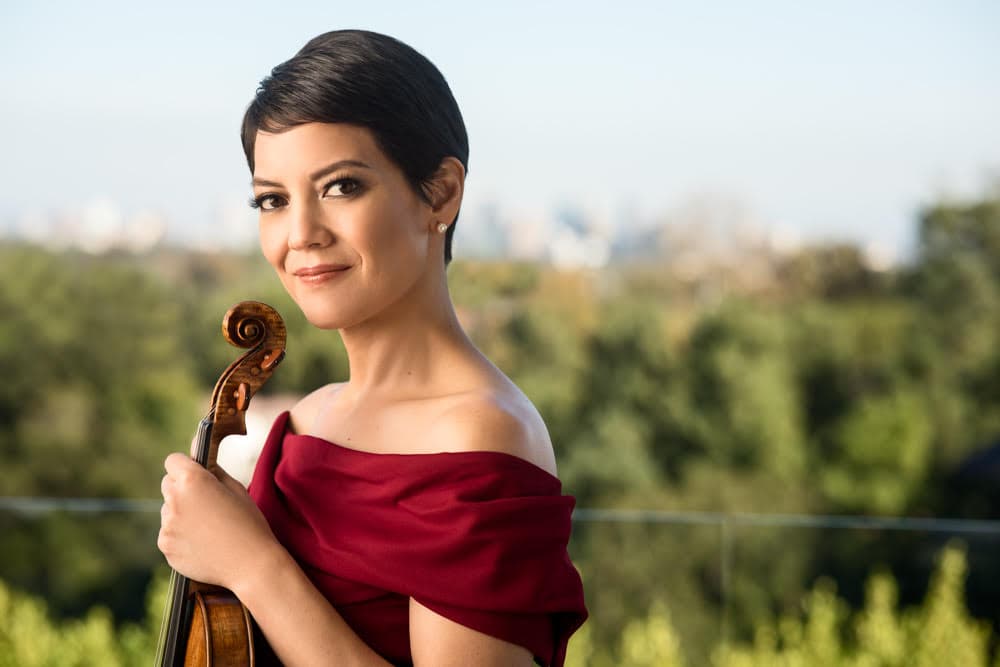The Annapolis Symphony Orchestra’s continuing Masterworks Series, as part of this season’s celebration of Beethoven’s two hundred fiftieth birthday, takes the theme, “Beethoven Discovers America,” in which the Orchestra looks at Beethoven’s influence on American music, and as Music Director and Conductor Jose-Luis Novo explains, composers from Europe brought the European musical traditions to America and adapted it.

Playing three pieces, Beethoven’s Leonore Overture No.3. Op. 72b, Bela Bartok’s Concerto for Orchestra, and contemporary American composer Adam Schoenberg’s violin concerto, Orchard in Fog, with violinist Anne Akiko Meyers, conducted by Maestro Novo, the Symphony brilliantly explores the connections between the past and the present.
The performance begins with the Leonore Overture. In a talk before the program, Musical Educator Dr. Rachel Franklin explained that this is the third overture Beethoven wrote for his opera Fidelio, and in its 15 minutes, it gives away the entire plot of the opera. As Dr. Franklin said, by the time the Allegro plays, “we already know Leonore, the heroine, is going to free her husband from jail.”
The Symphony plays it perfectly, starting off slowly and restrained before building to several outbursts, then returning to careful, low playing before the glorious explosion of the theme. It feels almost American in its celebration of freedom and energy, which helps explain why, according to Dr. Franklin, early Americans adopted Beethoven as a musical and cultural touchstone, seeing him as a Romantic, transcendental philosophical figure. The Symphony plays the ending with vigor and passion, a powerful, triumphant use of nearly every instrument. It is an exciting way to begin the evening.
The violin concerto, Orchard in Fog, is, as Dr. Franklin commented, adventurous, charming, and inventive. Commissioned by violinist Anne Akiko Meyers, and performed for the first time in 2018, Schoenberg was inspired by a photograph hanging in his bedroom of the orchard where he and his wife married. The concerto’s three movements tell of an old man looking back on his life, remembering the youthful joy with his wife, and preparing to leave everything behind. As Maestro Novo explained, it is different from most concertos, in that the first and third movements are slow, and the second is fast, while most are the opposite. Another unique quality is the use of scordatura throughout, with Meyer’s G string tuned instead to an F while the rest of the strings maintain their normal tuning.
Meyers is an absolute joy to watch, playing the first movement meditatively and thoughtfully, with moments of powerful emotion. The Symphony blends well with her violin, a few unusual musical sounds working well with it. The second movement is all energy, with almost a pop music, heroic feel to it, drums beating along with the violins. It is thrilling.

The scordatura is used because Schoenberg wanted the piece to sound “closer to the earth.” It is again reflective and calm, with moments of emotional power. The ending slowly fades out, and there are a few beats of thoughtful silence. It is a beautiful work, delightfully unusual and complements the two other pieces.
Bartok’s Concerto for Orchestra completes the evening. As Dr. Franklin explained, Bartok had fled his native Hungary in fear of the new pro-Nazi regime. Settling in America, in 1943 he became seriously ill with leukemia, having not written anything for two years until he received a commission from Boston Symphony Orchestra Conductor Serge Koussevitzky for a work in memory of Koussevitzky’s late wife. This commission revived Bartok’s spirits, and, according to Dr. Franklin, led him to “rediscover the orchestra he always loved and had left behind as a refuge.”
The Symphony tackles this work brilliantly, allowing all the instruments to be heard, both separately and then “dancing” together, balancing each other well. Jay Heltzer on bass trombone beautifully captures the solo theme in the first movement, with a rich, deep sound. The side drum in the second movement, almost military in its rhythm, makes a powerful backdrop for the woodwinds and trumpets. The peasant dances in the fourth movement are delightfully quick and easy, giving a different flavor to the work. The ending is a triumphant celebration of every instrument, all the sections working together for a powerful finale.
Maestro Novo leads the Symphony wonderfully, combining power and grace. His comments between the first and second works are helpful, letting the audience see the connections between these three different pieces. As he remarks, they help to show that “art is created through friendships and relationships.” Dr. Franklin’s pre-performance talks are also incredibly useful, giving helpful background on the composers and the works. This concert also will be performed at the Music Center at Strathmore on March 1, so you can hear it tonight in the intimate setting of Maryland Hall, and Sunday in Strathmore’s larger setting. But be sure to catch it!
Running Time: Two hours, including a 20-minute intermission.
The Annapolis Symphony Orchestra performed with Anne Akiko Meyers through February 29, 2020, at Maryland Hall for the Creative Arts – 801 Chase Street, Annapolis, MD. For tickets to future events, call the box office at 410-263-0907 or purchase them online.
Updated on March 2 to include mention of scordatura in the Schoenberg work.




